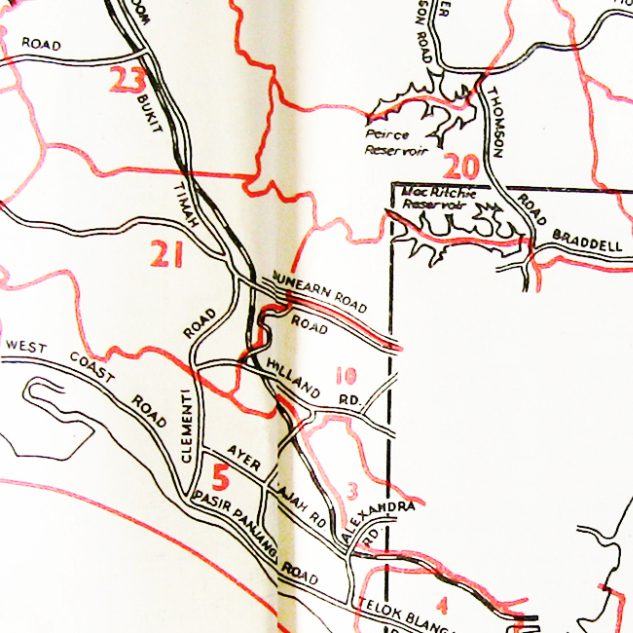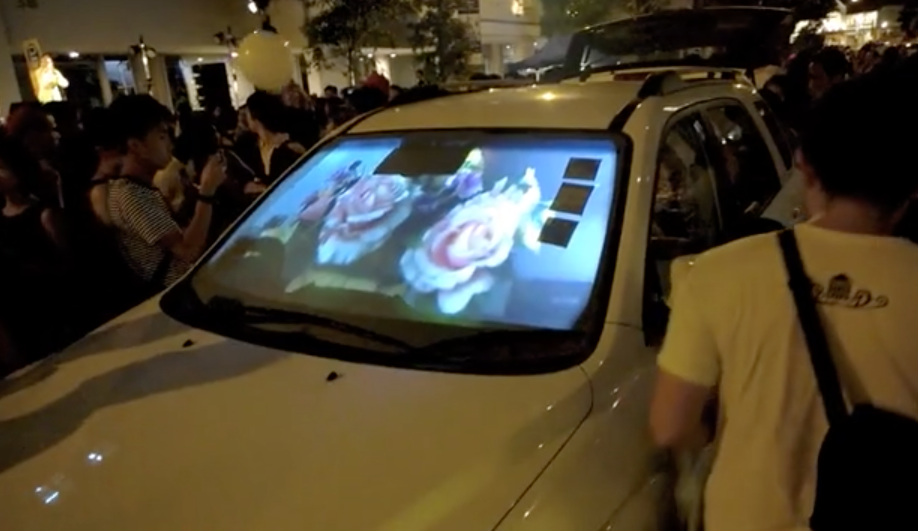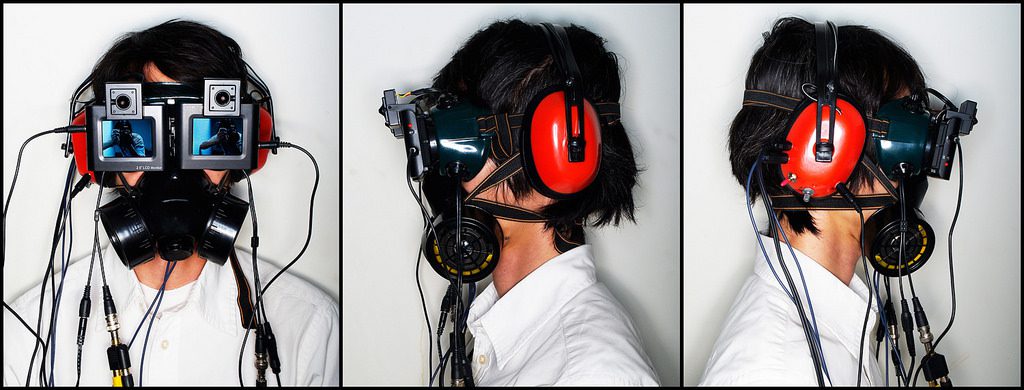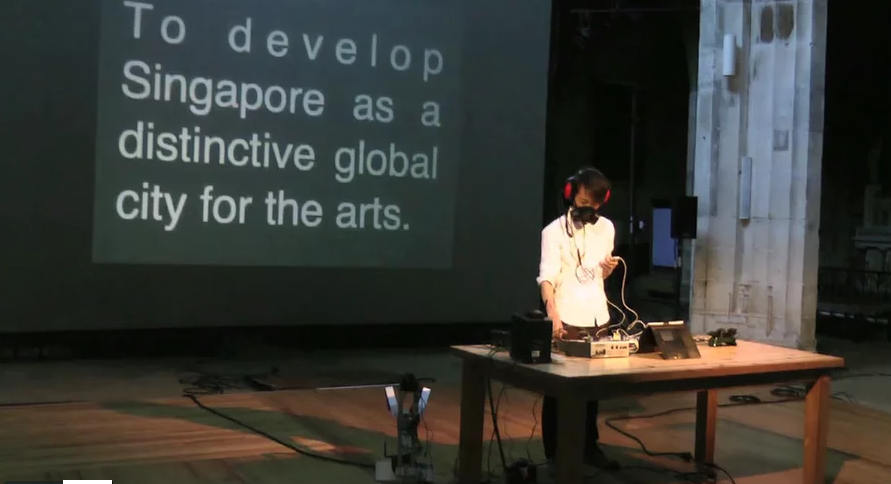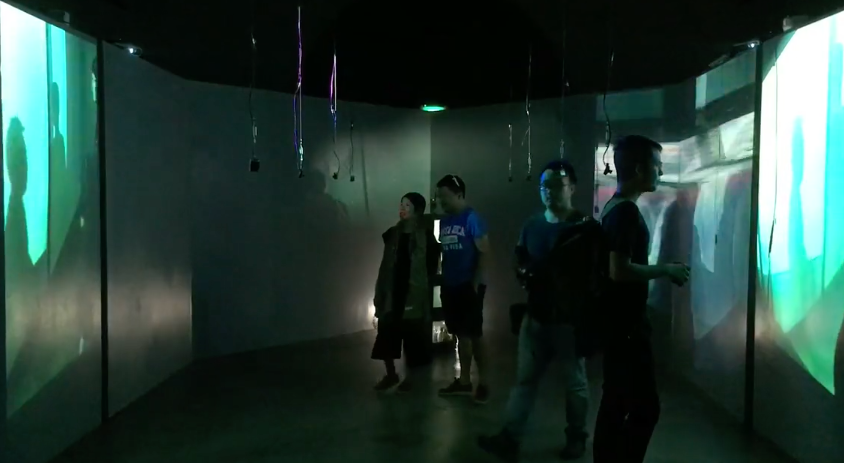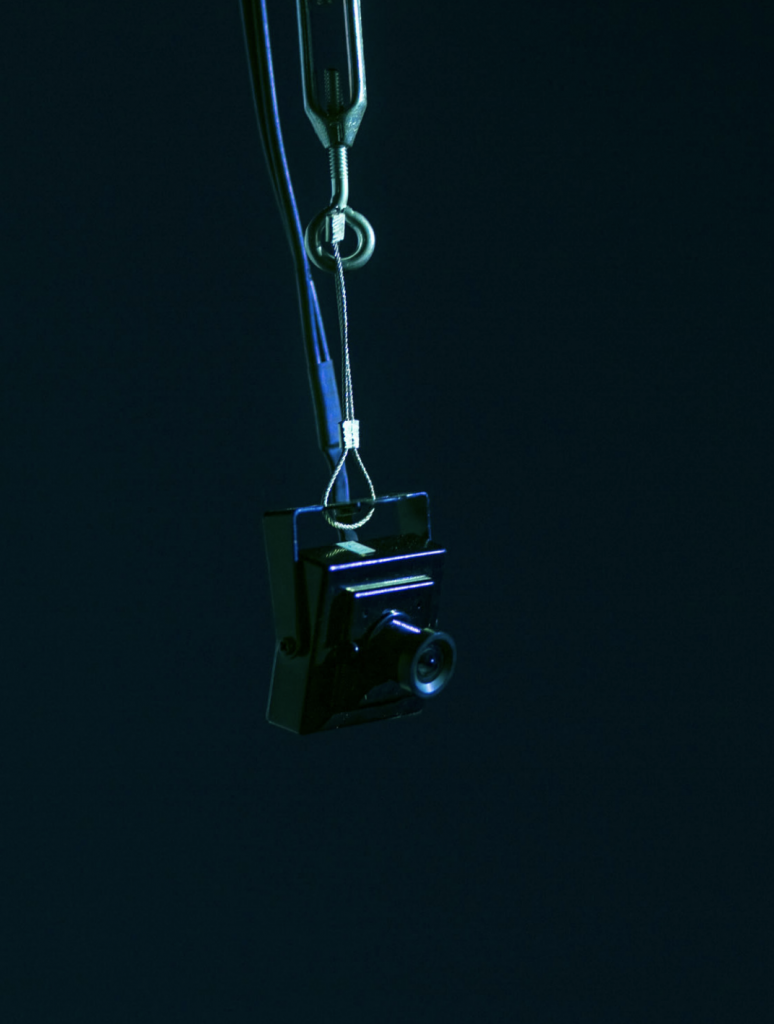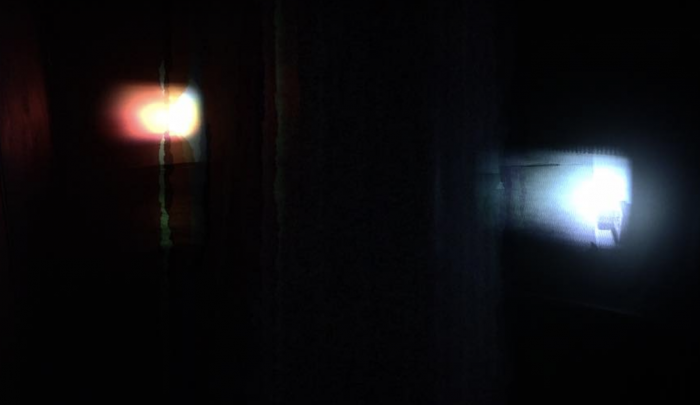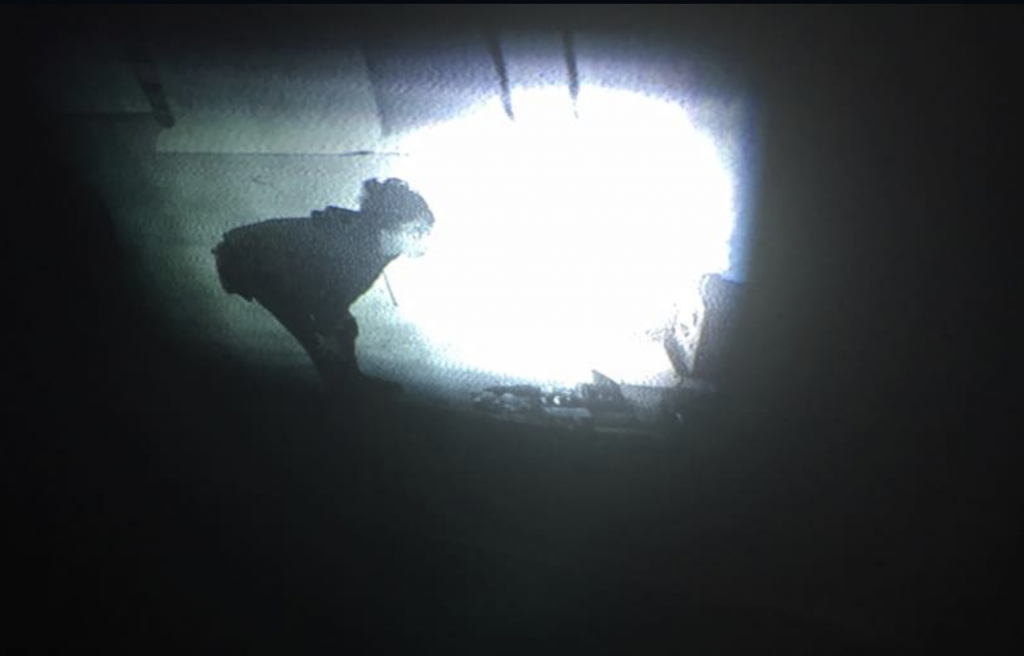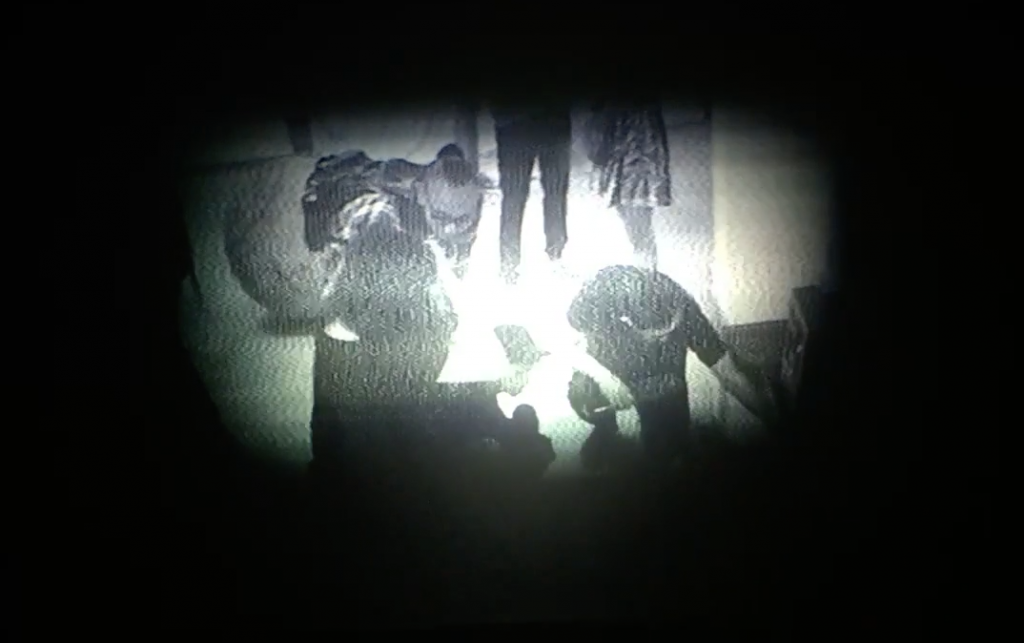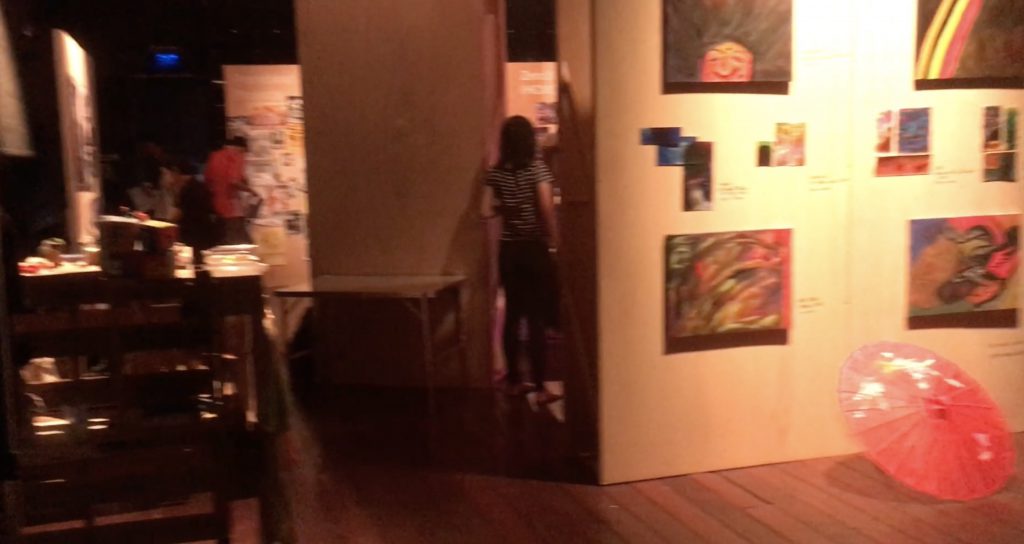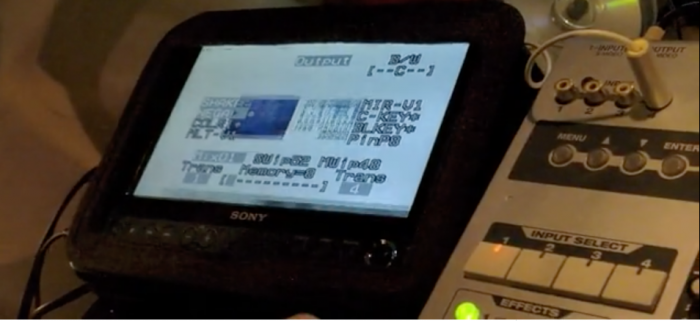
The Pioneering New Media Art of Urich Lau (Singapore)
- Introduction
- Early New Media works and their influences
- The artist as “inverting technology” in ‘life circuit’
- Influence of ‘indeterminant visuals’ in ‘light-space’
- The Artist as Orator as a form of critique
- The Audience as Subject Matter and Material
- Art as Surveillance, surveillance as art
- Art challenges the way we look at privacy
- Does technology help us to remember or forget?
- Conclusion
1. Introduction
This paper explores Singapore as a city that may be small but has become a massive global tech hub in establishing itself as a highly technologised society with a labyrinthian framework of digital connectivity that connects people across the island. According to reports, the city-state comes in first for fastest connection speed and tops global connectedness indexes in terms of the distribution and outflow and inflow of goods, data, finances and even talent(s). It is this pervasiveness of technology that one assumes that this connectivity and openness to technology has infiltrated all aspects of the commercial, social and cultural aspect of Singapore. This paper discusses the work of Singapore new media artist Urich Lau as symptomatic of the conditions within the city where the artistic strategies of new media artists observe and critiques the various technological themes that face the uber-technologised ‘Smart City‘.
Historically, the art from the regions of Southeast and East Asia has been influenced by centuries of Euramerica representational painting and the western canon of art. In Singapore’s visual narrative, the development of the Nanyang School of painting is commonly referred to as the beginnings of a modern visual language in Singapore and Malaya. Such a beginning has been subsequently fractured in the past half a century as aspects of the contemporary, the performative and the technologised art has unfolded in varying levels of influence on Singapore’s visual (and art history). The resultant effect is that technologised art sits on the periphery of the visual arts ecosystem and has not infiltrated into the city’s socio-cultural conditions much. We would assume that with technology’s ubiquity in the city, there is probably no lag in witnessing the artistic practices of artists in Singapore embracing or engaging in discourses in new media art. The reality, in fact, is far from this.
This essay will explore the works of Lau in three parts. The video performance Life-Circuit (2010, 2012), collaborative video installation Light-Space (2016) and public commission The Lapse Project (2018) by his interdisciplinary collective INTER-MISSION[1].will be cited as part of an artistic strategy that engages in media art and critiques the very medium in relation to Singapore’s supposed ‘techno-culture’. The new media practice of Lau will be examined using examples from new media art history and relevant theories ranging from the writings of Roy Ascott to Randall Packer and artwork references from John Cage to Nam June Paik.

Urich Lau, Life Circuit (2012)
Saint-Merry Church, Paris, France
Part of Singapour mon amour’s performance module INTER|action
2. Early works and their influences
Urich Lau has presented works globally from across Asia, Europe, Central Asia Australasia and North America. The new media practice of Lau comprises of a visual aesthetics that is hypermedia[2] in form, in which he layers old technology with new media. In some of his earliest explorations, we see influences of Nam June Paik, Wolf Vostell, and Stelerac, where he explores the coalescence and construction of layers of still and moving images, punctuated by modulated sounds and set in various spatial contexts. For example, Life Circuit (2010,2012) and Video Car (2014) are examples of works that adopted the embedding of technology (or television monitors or computers) into bodies, objects, and situations. Nam June Paik’s TV Magnet (1965) is an example of an early new media artwork that influenced him; where a magnet is placed on top of the television, disrupting the television signal and hence the broadcast.
The magnetic field interferes with the television’s electronic signals, distorting the broadcast image into an abstract form that changes when the magnet is moved. Paik’s radical action undermines the seemingly inviolable power of broadcast television by transforming the TV set into a sculpture, one whose moving image is created by chance procedures and can be manipulated at will. Through his transformation of the television image, Paik challenged the notion of the art object as a self-contained entity and established a process of instant feedback, in which the viewer’s actions have a direct effect on the form and meaning of the work. The interactive quality of Magnet TV paralleled the audience involvement essential to performance art and Happenings of the early 1960s, and also anticipated the participatory nature of much contemporary art. – Whitney Museum of American Art
Video Car (2014)
Lau’s Video Car (2014) and Life Circuit (2010, 2012) have visual semblances to the Paik’s artistic oeuvre, where television screens and its latter-day incarnation of the digital projection are employed by Lau in various forms, from a performative installation that broadcasts images from tv monitors to a sculptural video piece as in the case of Video Car. The moving images created in both works as well as later works like Light-Space (2016), are not clear unmodulated digital signals but signals that are distorting forming abstract forms that change when audience moves or lighting conditions changes.
Lau’s work is challenging not just the notion of an art object but also a critique of the culture in which it is made in. For example, Lau’s Video Car is positioned in one of Singapore’s most highly attended public art event ‘Night Festival’ where the general public is treated to live performances of music, theatre and performance art. Lau has intruded into the cordoned off streets and transformed a car into a new media sculpture where a TV set plays random imagery manipulated at will by the artist or guest video-jockey. This radical gesture resulted in confused and curious on-lookers who took to documenting such a rare and dichotomous sight.
Life Circuit (2010, 2012)
Life Circuit (2010, 2012) takes on a more performative and bodily form. Akin to Paik’s controversial performance pieces like Opera Sextronique (1967) and TV For Living Bra (1969), where he includes smaller television sculptures on human bodies, robotic devices and giant video walls with synthesized imagery pulsating from cathode-ray televisions, Lau has devised an electronic media performance piece that is ground-breaking in technology and new media-savvy Singapore. Lau can be said to mischievously embrace the ‘technologies of a technologised society’ in producing Life Circuit (2010, 2012) and re-performing it locally in museums, art schools, independent art spaces and abroad in biennales and expositions (in Paris, France). The work is ground-breaking in forming a connection between observer, the ‘collaborator’ and the viewing publics as well.
In the various iterations of Lau’s video performances, he dons wearable gadgets reconstructed from industrial safety equipment like a gas mask and welding goggles in presenting a ‘hybrid-being’ in disguise. His works are akin to Ivan Sutherland’s Head-Mounted Display (1969) and Michael Naimark’s Aspen Movie Map (1978) where the artists subsumed technology as bodily art-appendages. Similar to Naimark’s Movie Map, there is ‘travel’ involved in the work, where the collaborator walks around the museum space in a “surrogate travel”, in which the artist (unlike Aspen Movie Map, where it is the viewer who is transported virtually to another place) views the spaces the collaborator is walking around in. At the same time, the projected images are also a re-creation of these visuals with pre-programmed visuals authored and sequenced by the artist in-situ. The real-time experience of the work is one that is unique to the audience witnessing the work in the projection space. Life Circuit (2010, 2012) is thus similar to Naimark’s Aspen Movie Map (1978) in integrating the movement of people around the space into a projected imagery- almost like being brought on a tour of the space.
3. The artist as ‘Inverting Technology’ in Life Circuit (2010, 2012)
Not just content with referencing examples from new media art histories, Lau’s video performances can be seen as inverting the capabilities of these technologies and critiquing our society’s adoption of innovations. His performances call upon the gadgets to become the extensions of the artists. These examples of technology impede him- herein blocking, instead of giving the artist the capability to navigate or visualise new spaces. The artist is now barricaded from his visual, audible and vocal capabilities and is only a vessel/machine in projecting out video and audio streamed from life-feed and playback media to the audience.
In the artist’s interview[3], he shared that in Life Circuit (2010, 2012) and other similar works- his intention was to form a ‘circuit’ between the audience, the medium and ‘let the moving images and sounds produced from these interactions replace (his) human senses in perception and expressions’. It is in this series of ‘life-circuit’ works that Lau has deftly inverted technology by producing situations of inconvenience and its impediment in questioned our society’s embrace of technology. Further to this, he body of works questions if there’s a need to be more careful in picking the technology to adopt.
4. Investigating the artists and indeterminant visuals
With these examples, we are introduced to a Singaporean artist who has embraced technology but also mirrored the deficiencies inherent in an over-dependence on them. Next, we continue our investigation of new media history in assessing how Lau has staged events within a technologically-mediated visual framework.
The works of Lau largely depends on the interaction between audience- with indeterminant visuals created on TV and projection screens in real time and pre-programmed. The images are at times abstract, fractured and moving-image representation with moments of intermittent flash (caused by camera lens flare). These images are sometimes a result of live feeds and embody an element of ‘glitch art’. The glitchy nature of the images are mainly due to the technical glitches brought about by interference from various sound, visual and computation equipment. We can observe that the various iterations of Life Circuit (2010, 2012) highlights the fallacy of such interactivity and places the artists’ body as an altered being that forms the ‘somewhat forced’ connection with technology and the audience.
“What is projected into the physical space are what the cables in and out of the body of this part-machine and part-man has achieved- a performance sequence that is a result of the presence of the audience, where capturing people in the images has distorted the sound due to the video/sound mixer interfering with the visuals.”
Urich Lau
As can be seen in the earlier works, Lau’s work very much depends on the reaction or presence of the audience and touches on ideas of indeterminacy. He has been influenced by cinema, music and as a result his work deals with the inherent indeterminate relationship between music, images and the audience. A characteristic of hypermedia artwork is ‘the shift away from the traditional art audience passively observing’, critiquing and historicising the artwork. Here is a hypermedia artwork that is mediated through multiple media(s) and produces limitless possible associations between previously unrelated mediums.
4. Influence of ‘indeterminant visuals’ in ‘Light-Space’
In Lau’s work as well as other new media pioneers like John Cage, Nam June Paik and Rauschenberg- “the structures of ideas are not sequential” because the audience takes on a participatory role instead of one of passivity and is required to create meaning together with the artists and the medium (in this case technology). The unpredictability of the images formed from the live-feed is akin to John Cage’s Variations V (1964) and Rauschenberg’s Soundings (1968) where motion and sound are used as triggers to control imagery, performance and the experience in and of the space.
John Cage is perhaps one of the most influential avant-garde composers and artists of the 20th century, and with Variations V (1964) has used chance techniques to create an unpredictable, indeterminate relationship between music, dance, and image. Where a sensor tracks the motion of dancers and this movement is then used as a control source for the sound input. This together with Soundings (1968), where it is an interactive media work that draws vocal sounds of the audience to activate lights from within the sculpture; which will then light up the chairs, presents an entirely new role for the viewer. Rather than being a passive observer or receiver of the artwork, the viewer is now empowered to actively shape and affect the imagery and their experience of the work with their input or voices.
Therefore in Lau’s work, as in the case of the experiences of Life Circuit as well as Light-Space, the audience becomes an activator of images and experiences for the space. For example in Life Circuit, the imposing pre-programmed text and images, as well as the electronically filtered elements found within the audience and the exhibition space, created a poetic experience of interactivity between the artists, the audience’s physical presence, and the dull lull of the electronic gadgets. As is the case in Light-Space, the visitor’s movement results in changes in the images projected in the exact space that the audience walks, talks and resides in. This embodied experience projected and articulated by Lau is an example of his artistic strategy of engaging in the discourses of new media art. Unlike other local artistic practices- he not only engages in new media art, he is also producing a form of art that is apart from other art practices experienced in Singapore- where he deftly critiques at the same time ‘aestheticises’ the experience.
5. Artist as Orator as a form of critique
So far we have touched on how Life Circuit attempts to form a ‘circuit’ between audience, art medium and moving images. As a form of social critique, the work also touches on issues pertaining to the state of contemporary art and heritage in Singapore’s context. For example, in an iteration of the work abroad like Malaysia, Taiwan and in the Pyeongchang Biennale, Lau included ‘statements as noise’ and programmed computer voices to read out the National Art Council (NAC)’s mission statement. With this radical gesture, he has presented himself as an ‘orator’ talking about the conditions of Singapore Art to the foreign and unsuspecting audience. In Lau’s work, there are elements of ‘entropy’ being forewarned to the audience. As the avoidance of entropy is seen as a response(s) to feedback, the interactive nature of Life Circuit calls on the audience to exchange or communicate information between the user and the machine (in this case the artist-hybrid-being) through action, gestures or sound.
The artist as orator and presence in these performative video works can be seen/read as reading out set ideals from the nation body/institution for the arts in Singapore. I see the inclusion of the text as a gesture by Lau to push his audience to reflect upon the mandated aims set out like a manifesto for the arts in Singapore. In essence, the performance-video piece Life Circuit (2010, 2012) can be read as an entropic treatise on the possible development of Singapore into a mega-corporation, where the quote below from Cherian George’s controversial book can be a basis for Lau’s investigation into the fabrics of our society.
Singapore’s tragedy is not the absence of idealism, but that it systematically rewards the individualistic majority and discourages the socially-conscious minority…. the overwhelming ethos is to mind your own business. Singapore’s embrace of the market forces … has provided rich incentives for Singaporeans to work hard, and to create wealth. But its exercise of illiberal controls to maintain ownership of the public sphere adds up to a heavy tax on thinking socially and acting politically. The public has been privatised.
Cherian George, P.202 (Singapore The Air-conditioned Nation: Essays on the politics of comfort and control 1990 – 2000)
As reference in Cherian George’s critical anthology of writings about Singapore, Lau’s work can be read as highlighting the symbiotic relationship between the artists and the purveyor and guardian of the arts in Singapore- the NAC, just as the orator speaks in a mechanical voice, sequences of glitches inevitably disrupts and interrupts the reading of these lofty messages. So who is the audience here, are there mere participants or are they the purveyors of this greater chance?
6. Audience as Subject Matter and Material
Speculations aside, on top of calling on the audience to exchange and communicate with his art, Lau extends the ideas manifested in iterations of Life-Circuit to the collaborative site-specific work Light-Space (2016). On multiple levels, this work requires close examination as it contains a layering of ideas that Lau has constantly engaged in his artistic oeuvre, wherein this work issues of surveillance, viewer-participation (or non-participation in Singapore’s art scene) and fetishism of the moving image are explored.
Light-Space (2016)
Light-Space (2016) is a multi-media installation between two unlikely collaborators- a painter of the traditional medium and a new media artist-technocrat. How do the practices of these two artists who engage in mediums separated by years of technology and discourses come together to enact a site-specific artwork?
The unique collaboration birthed an artwork that placed the audience as subject matter (and material), for without the audience the artwork ‘will just be lights in space’. Space itself is the vessel to allow the content to flow in, out and around. When people entered the space, the place becomes activated, and images/sound is formed. With this activation of the space, much like other immersive new media works like Variation V (1964) and Soundings (1968); materiality is birthed from the coalescing of matter (moving audience) and light (camera lens flare and moving imagery). The interaction of captured images (formed from movement by visitors to the space) and electronic pulses animates the colour, forms fragmented moving shades of light and create an aural soundtrack for the space. The sound in this case is formed by the feedback created by moving bodily forms and is akin to John Cage’s Variation V (1964) where the movement becomes a trigger and controller for ambient sounds.
Similar to Life-Circuit, the absence of images is echoed in the work, where images can only be formed if there is an audience. This “content-less” nature of the art can only be formed when the live feed from surveillance cameras in the space picks up movement and feeds them to the projectors which will then project onto the walls made of silver panels and form imagery that appeal painterly and ephemeral. This radical gesture is almost a reference to the hollowness felt by the spectator/artist and society in the experience of the arts in the city-state. In not reading too much into the visual void, I asked Lau in the interview: So what does the audience see? He answers:
The feedback of lights when they walk in, then the audience reacts to the work and sees fragments of themselves, their reflections. And when no one is in the room, the lights swing and captures reflections.
Urich Lau
Author’s reflection on the work
Those reflections in the empty spaces were beautiful moments in the work, I almost wish that the audience never appears as the abstract images formed by wedges of colours set against stark bright sparks (due to camera lens flare) envelops the space in a contemplative echo. There is beauty in that void. More poignantly, the gallery sitter is viewing the empty room, from a space behind.
Behavior becomes art, and the simplicity of the idea creates an experience that is the confluence of painterly aesthetics and technological inquisition.
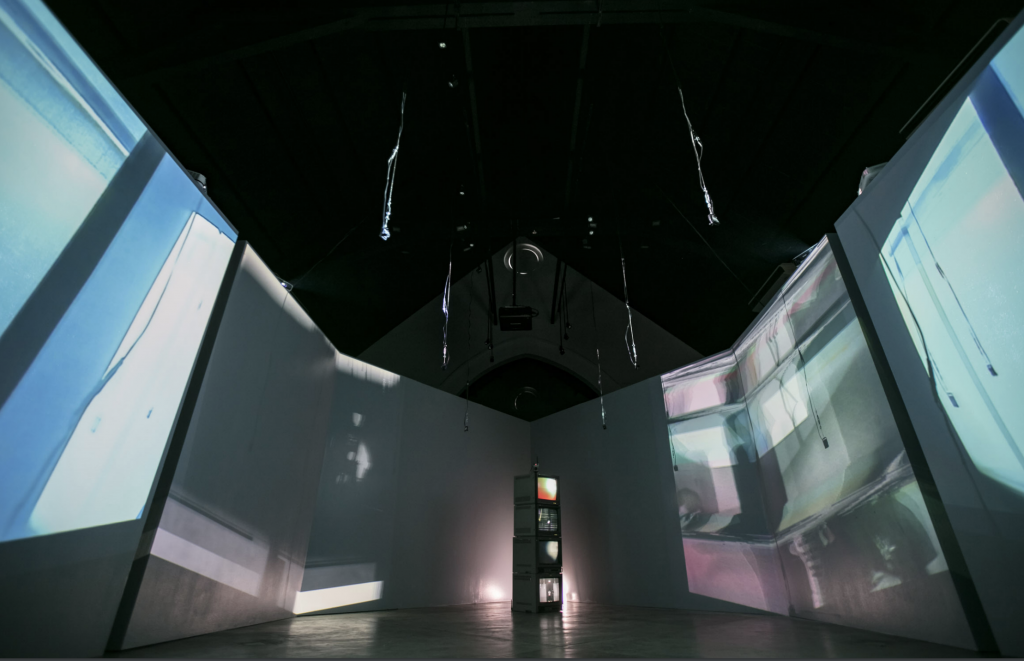
Urich Lau, Light-Space (2016) Exhibition: Objectifs – Centre for Photography and Film 2 to 22 Dec 2016
7. Art as Surveillance, surveillance as art
In charting the artistic oeuvre of Lau, surveillance of oneself and the surveillance of one’s society as one of the strong themes in his works. In ‘Light-Space’, the audience is given the (false) possibility of being given freedom to roam, but the surveillance camera is always there. Unsuspecting to the audience, another person sits behind the wooden frames and is observing them. Lau has cleverly constructed the space to bring up contentious ideas of surveillance, freedom and the ubiquity of technology controlling or ‘data-fying’ our lives.
In this work, Lau once again presents an immersive video-installation that calls upon technologies from sound-devices, video-splicing software and surveillance cameras to critique our contemporary world- or specifically contemporary Singapore. Lau specifically mentioned:
And in some sense when people enter the space it’s going to be disorienting with the images, the tunnel and the sound coming in. So, I’m wondering, this whole concept of disorienting the audience coming into the space, subverting their expectation of what an exhibition is supposed to be, what a space, an exhibition space is to be…
Urich Lau
This sense of disorientation is achieved with the dangling of multiple surveillance cameras that uses live feed to produce an immediate projection of the figures in the space.
At the same time, Lau is making a statement about what an exhibition space can be and is supposed to be- a white cube to experience an artwork passively. On a socio-cultural level, Lau is questioning the abundance of data and technology around us- just as his visitors are encouraged to take photos of the space, the people and the reflections or all of their experiences.
8. Art challenges the way we look at privacy
He sets up this scenario to challenge the way we look at privacy, especially poignant due to the currencies of our contemporary world. He shared that he encouraged audience participation and pushing the interaction to a post-digital domain, where the photographs were taken and posted on Instagram- where they may then circulate back to become a data or content on the internet. In Singapore, we are a city besieged by technology, to a level that is overwhelming. This large-scale video installation cleverly (and somewhat subtly) brings up questions of our culture- where we are asked:
- Why do we produce images?
- Why do we photograph or film life events? What do we do with them?
- Will it (the images) come back to haunt us?
Who’s watching and who is being watched?
Light-Space (2016) thus operates as a thought-provoking artwork on various levels and through the deft use of technology has constructed a scenario that brings to mind Roy Ascott, who wrote on the historical roots of new media:
meaning is not something created by the artist, distributed through the network, and received by the observer. Meaning is the product of interaction between the observer and the system, the content of which is in a state of flux, of endless change and transformation.
Roy Ascott
Lau through the examples of these rarely seen new media artworks have played with the language of video art, installation, sound art and broken them down and re-assimilated them in the space all at once, almost creating an endless change and transformation. The employment of disruptive and ‘content-less’ images coupled with the restructured space produced a somewhat disorientating but poetic work that looks at the condition of the site and presents a self-reflective space to contemplate on Singapore’s condition of the arts.
9. Does technology help us to remember or forget?
In ending off this essay, we will look at an artwork to be shown in April/May (26th April to 12 May 2018) by INTER-MISSION- a collaborative art of Urich’s creative mind. The Lapse Project (2018) is a collaborative new media artwork that presents experiences for the visitor who will toggle between the physical and the imaginary through the use of VR headsets, viewing of ‘panorama-lapses’ on large-scale projection videos and particle lapses (through live sound feeds) while walking through The Artshouse[4]. All of these experiences are set in The Artshouse, a national monument in itself where the visitors will develop new visions and modes of interaction with Singapore the city, and question one’s relationship to these monuments, and what constitutes one’s collective reality’.
In interviewing Lau, he shared that he was pleasantly surprised when NAC and the organisers selected their proposed work for the Singapore International Festival of Arts (2018). INTER-MISSION had proposed a radical idea of an interface that enables places of artistic and cultural importance to be editable and more contentiously switched on or off- almost like removing them from our memory. He highlighted that he was certain that the state-sanctioned council will not see too kindly to removing one’s cultural sites, let alone remove four of Singapore’s oldest buildings that now serve as spaces for the arts around Singapore’s Civic District.
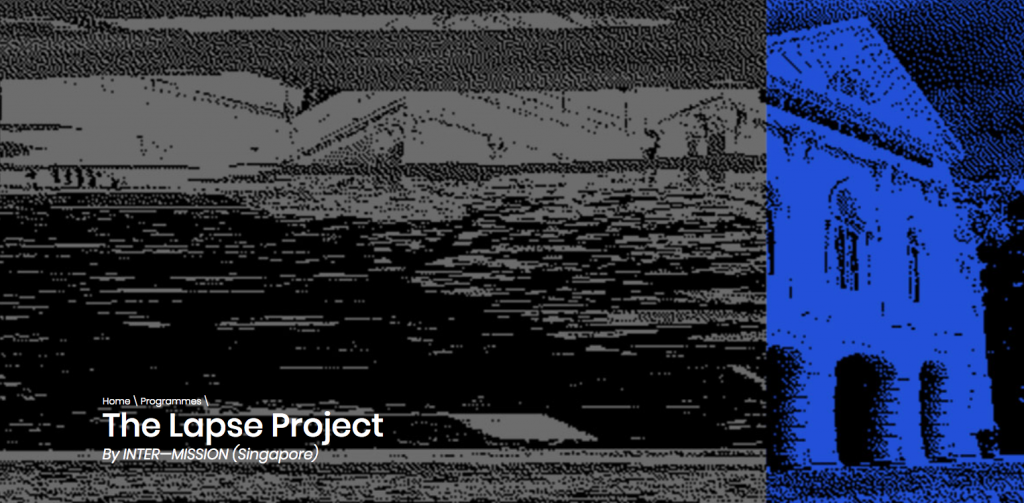
INTER-MISSION The Lapse Project (2018)
Singapore International Festival of Arts (SIFA) held at The Artshouse, Singapore
The project was accepted and Lapse Project (2018) will be created. The work takes on a multi-dimensional and interdisciplinary approach to art-making which is a reference to the artistic strategies of Lau. The Lapse Project seeks to question the use of space in Singapore, the lapses in memory in Singaporeans and the possible effects of these physical lapses on national history and national culture.
10. Conclusion
We conclude that with The Lapse Project (2018), it has come to embody the ideas in Life-Circuit and Light-Space and more. The piece picks up from Lau’s artistic strategies in positing visitors as active participants, where in this case they contemplate on the presence and absence of the arts in Singapore (through the physical removal of these art institutions). Similar to the two works presented earlier, the yet to be experienced work employs Lau’s vision of inverting technology to question one’s own being and place in time and space. Looking beyond the artist and at the system of art viewership and reception in Singapore, The impending materialisation of The Lapse Project can be considered an indication of an increased acceptance or appreciation of new media art in Singapore. Lau and his collaborative outfit INTER-MISSION is an example of a collaborative artistic endeavour that adeptly use(s) new media to bring to fruition their aesthetic visions and thematic concerns. As a result, the work can open up further debates and dialogues about national identity and uses of our city-space. It is also through this lengthy and timely survey of Lau’s artistic strategies that we are able to glean the strong messages about our society that resonate in Lau’s poignant new media artworks. Here is a new media artist who addresses technological themes in a manner unlike any other in the cityscape, and it is my intent in writing this essay that Ulrich Lau is situated as an important critic and pioneer in Singapore’s early new media art history.
Bibliography
- Randall Packer and Ken Jordan, Multimedia: From Wagner to Virtual Reality, 2001
- George, Cherian, Singapore The Air-Conditioned Nation: Essays on the politics of comfort and control 1990 – 2000, 2000,
Websites
[1] INTER–MISSION is an art collective focusing on interdisciplinary and collaborative works in video art, audiovisual, performance, installation and interactive art, and discourses of technology in art.
[2] Hypermedia is defined (by Parker and Jordan 2001) as the connections between different discrete media elements that provide a personal trail of association among them
[3] Interview with Urich Lau conducted on 12 April 2018, NAFA Gallery
[4] Occupying the almost 200-year-old building that was home to Singapore’s first parliament, The Arts House plays a key role in the country’s arts and creative scene. The Arts House is an interdisciplinary art spacer that promotes and presents multidisciplinary programmes and festivals within its space.
